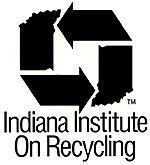
CASE STUDY No. 9612
KEY WORDS CUSHIONING MATERIALS, MOLDED RECYCLED NEWSPRINT
Black & Decker Household Products Division
6 Armstrong Road
Shelton, CT 06484
Contact: Bernie Samms, Manager, Packaging Development. Tel: 203-926-3000 Fax: 203-926-3057
Summary
To protect its Toast-R-Oven/Broiler during shipment, Black & Decker replaces the old inner cushion made of expanded polystyrene (EPS) with a new engineered cushion made of 100% recycled newspaper (ONP); thus reducing cushioning parts by one-third and cutting the related cost by10% to 15%, reducing incoming freight costs, and improving prospects for recycling of cushioning materials at the consumer's end.
Action
A high level of environmental awareness at Black & Decker, a producer of consumer home appliances, led to the formation of a task force to evaluate the environmental impact of cushion packaging materials. One of the first products to be evaluated was the Toast-R-Oven/ Broiler. Molded EPS foam had been used for some time and had performed well and within the packaging budget. However, a number of alternatives were evaluated for performance and environmental advantage.
The new inner packing material is an engineered cushion fiber manufactured by Sonoco Protective Packaging Division (800-AEGISA1 or 615-262-3837). The primary ingredient, 100% recycled newsprint, is steam-molded to fit the product. Drop-tests have shown that the new ONP cushion performs as well as or better than the old EPS cushion. And since the new cushion is made of the same basic material as the outer carton--paper fiber--recyclability of the entire shipping container is considerably enhanced compared to the previous combination of paper and polystyrene. (EPS remains a very difficult material to return to beneficial use because of its light weight and the scarcity of recycling processors compared to the abundance of processors serving the paper industry.)
Employees in the case-packing area of Black & Decker participated throughout the process of selecting new packing materials. They suggested, for example, adding large hand-holds to facilitate both packing at the factory and unpacking at the consumer's end, and better identification of left- and right-side end caps. Packing line efficiency has increased because the new design is easier to lift--more ergonomic.
Payback
The old, EPS cushioning system consisted of four parts: two end caps and a two-part tray to secure the product in place. The new cushion consists of three parts: two end caps with large extensions that suspend the oven in the box, and a cushion fiber tray. The reduction from four units to three saves Black & Decker 10% to 15% in cushioning cost per unit. Because the new cushions are nestable, the company also saves on incoming freight: a full shipment of molded ONP cushions occupies only one truck trailer compared to two trailers for EPS units. Black & Decker estimates its freight charges for this packing item have been reduced by one-third. The company also notes an unspecified decrease in long-term raw material costs.
Additional savings
The nestable packing material increased dock space and packing line floorspace by
50%. Reduced incoming freight has saved fuel. In addition, because the cushioning raw
material--old newspaper--is widely available and cheaper than EPS, Black & Decker has
gained some protection from price fluctuations by adopting the new packing material.
